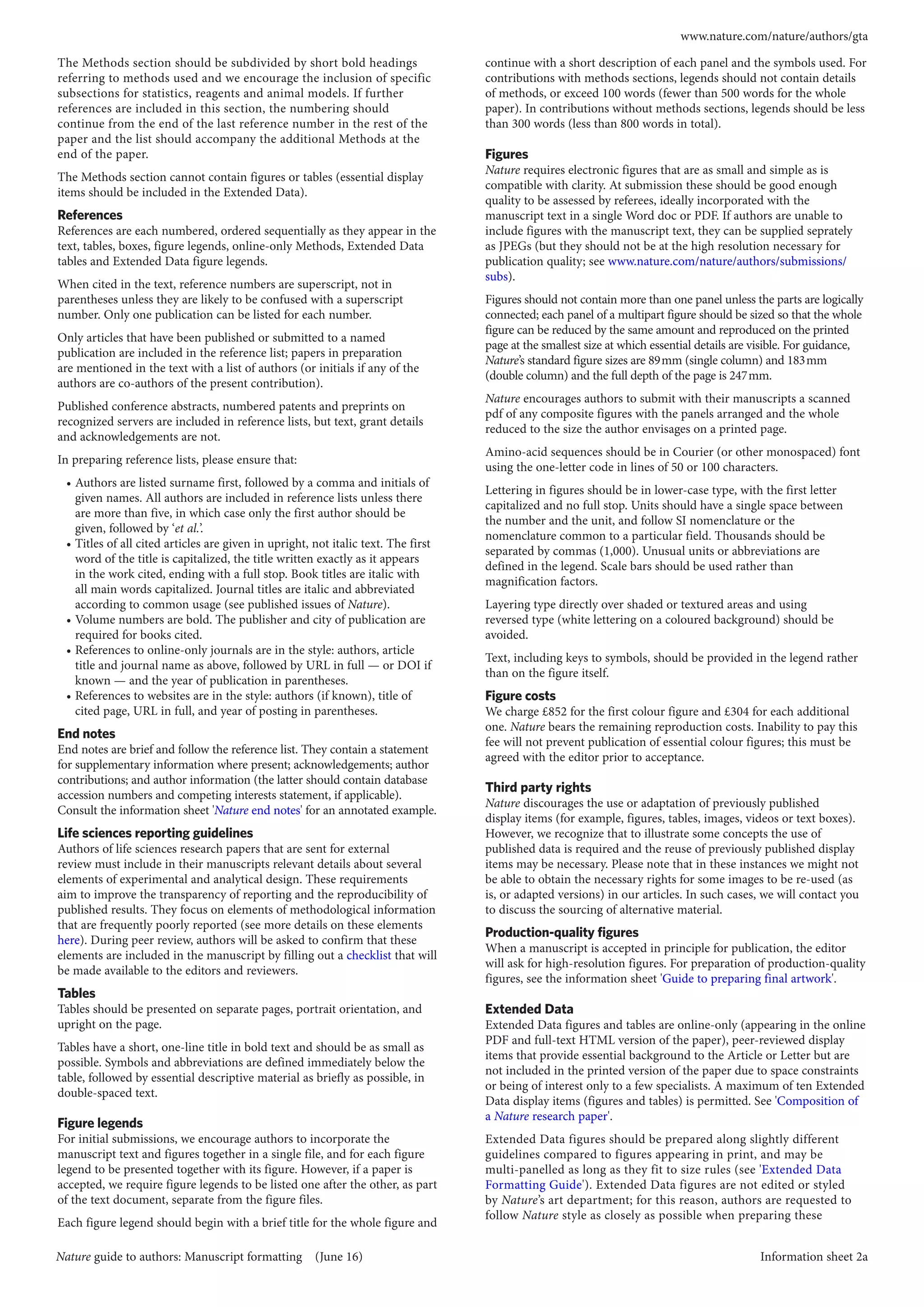This document provides guidelines for submitting contributions to Nature, including the main formats of Articles and Letters.
Articles are original reports of substantial advances in understanding an important problem, allowing up to 50 references and 3,000 words. Letters are short reports of an outstanding finding of interest to other fields, allowing up to 30 references and 1,500 words. The document describes the required elements and structure for submissions, including titles, text, methods, references, figures, and end notes.


